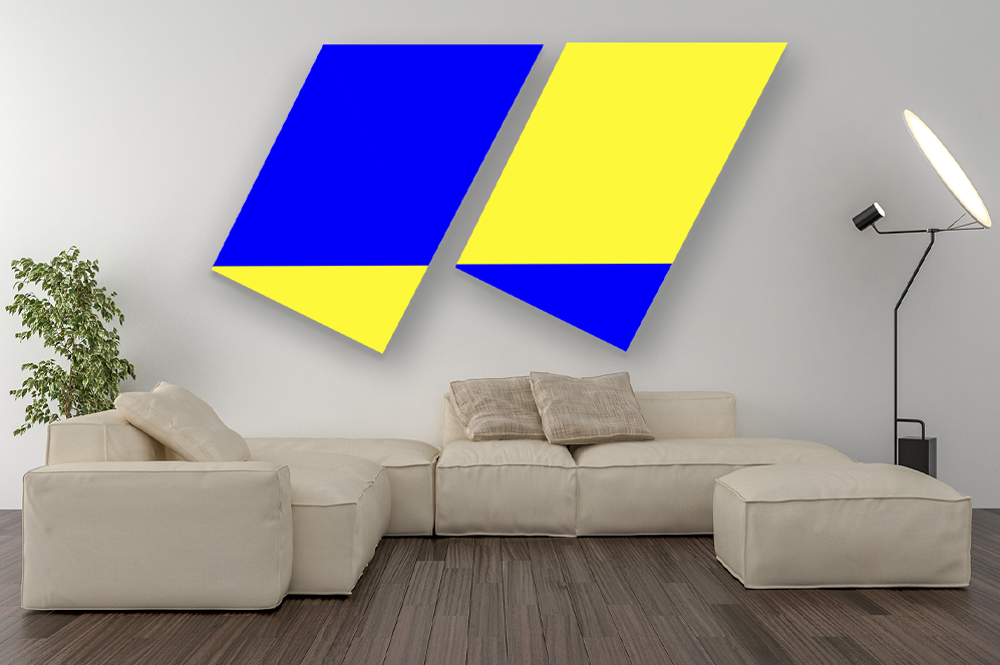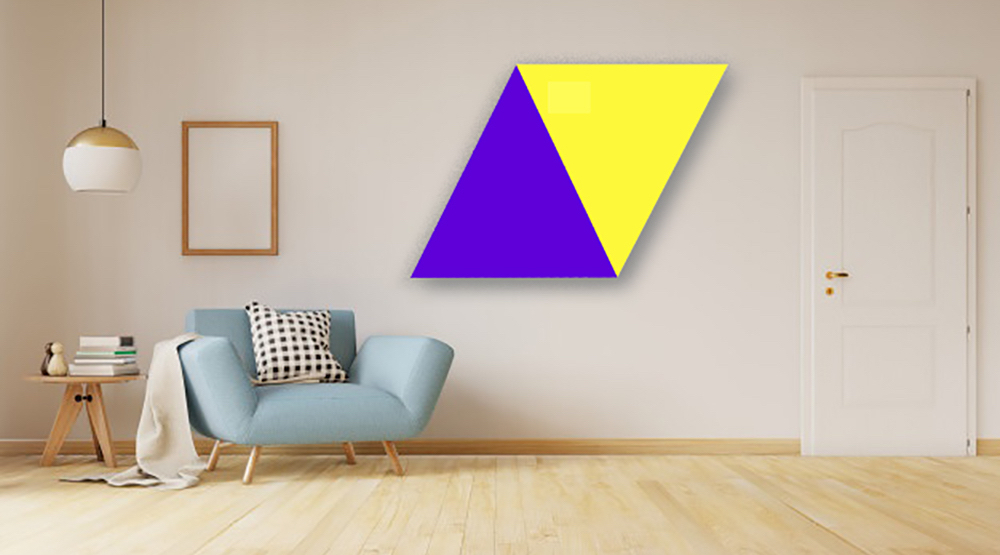What is “Concrete Art?”
There are several major works of Concrete Art in the Ricola Collection. The Zurich Concretists Max Bill (1908–1994), Camille Graeser (1892–1980), Verena Loewensberg (1912–1986), and Richard Paul Lohse (1902–1988) were all important benchmarks for Alfred Richterich, the man who first conceived the collection in the late 1970s. His decision to focus the collection of art from Switzerland on artists who were working on a contemporary concept of the “work”—and that against the backdrop of a modernist understanding of art history—has influenced the collection’s development to this day.

But what exactly is Concrete Art? As the glance at art history in what follows will show, the term is not just a description of certain stylistic characteristics, but in fact defines the epoch that came after abstraction in the early twentieth century. Concrete Art expresses the shift in the perception of what an artist’s task actually is, and of what art can and should achieve, that began to manifest itself from 1930 onwards. The Concretists did not define a style that might be learned with the aim of applying it themselves as artists. After all, the language of art is developing all the time.

The first mention of “concrete” art dates from 1930 and the manifesto The Basis of Concrete Art by Theo van Doesburg (1883–1931). In a commentary on his manifesto, which like the latter was published in French in van Doesburg’s magazine Art Concret, he characterized abstraction as a historical epoch that was now finished. Nothing, he wrote there, was “more concrete, more real than a line, a color, an area.”

The six-point manifesto reads as follows: “We say: 1. Art is universal. 2. The work of art must be conceived and shaped in its entirety in the mind before it is executed. It must not receive any of nature’s formal properties, nor those of sensuality, nor those of sentimentality. We want to exclude all lyricism, drama, symbolism etc. 3. The painting must be composed exclusively of purely pictorial elements, that is to say of shapes and colors. A pictorial element has no meaning beyond itself, so that the painting as a whole has no meaning beyond itself. 4. The construction of the painting and its elements must be simple and visually controllable. 5. The technique must be mechanical, that is to say exact, anti-impressionistic. 6. It should strive for absolute clarity.”
Each of these points is quoted and explained in detail in the commentary. And this is what van Doesburg had to say about method: “The work of art exists in its entirety in the mind before being realized materially. To match the perfection of the concept, it has to be technically perfect. It must not bear any traces of human weakness: no trembling, no imprecision, no indecision, no incomplete areas etc. etc.
Humanism is cited to justify all manner of stupidities in art. If you cannot draw a straight line by hand, use a ruler. Typescript is clearer, finer, and more legible than handwriting. We do not want an artistic hand. If you cannot draw a circle by hand, use a compass. All the tools invented by the intellect for the purpose of perfection are recommended.”
The Swiss architect, artist, and product designer Max Bill published the first of three different versions of his own definition of terms based on van Doesburg’s in a piece headed “concrete design” published in the catalogue of the exhibition Problems of Contemporary Swiss Painting and Sculpture at the Kunsthaus Zürich in 1936. In this essay, he wrote that “concrete design is that design that arises of its own accord, following its own laws without deriving these from external natural phenomena or modeling them on the same.” This was followed in 1938 by Wassily Kandinsky’s essay entitled “L’Art Concret” published in the magazine XXe Siècle.
Bill’s active work as both publicist and curator, which he was able to continue even during the war, did much to establish the concept of “Concrete Art,” even if only in Switzerland at first. His essay “From Abstraction to Concrete Painting in the 20th Century,” in which he traced the recent history of art from Cubism to abstraction and from Constructivism to Concrete Art, positioning his own work at the end of this development, was published in 1943. The Kunsthalle Basel hosted the exhibition Concrete Art organized by Bill in 1944, and a revised version of the aforementioned text was published in the catalogue of the exhibition concrete art from zurich in 1949, which was later shown in Stuttgart and Munich as The Zurich Concretists. “Concrete art is what we call those works of art that arise of their own accord, subject to their own laws, without recourse to external natural phenomena or the transformation, including through abstraction, of the same.” This is the version of the text that Bill used in later publications.
Camille Graeser, who like Max Bill, Richard Paul Lohse, and Verena Loewensberg, belonged to the first generation of Zurich Concretists, who incidentally would never officially declare themselves a group, undertook his own first attempt to draw a clear distinction between concrete art and abstract art—as his fellow artists had done before him—in 1944. In a brief article published in the abstrakt + konkret bulletin of the Galerie des Eaux-Vives in Zurich he defined both terms, but without saying anything fundamentally different than what Bill had said before him.
While the language used is more lyrical than that of the considerably younger and better known Bill, in terms of substance, these two artists, who differed radically in terms of personality and temperament, were obviously of one mind.
Roman Kurzmeyer
(translation: Bronwen Saunders, 2014)

















